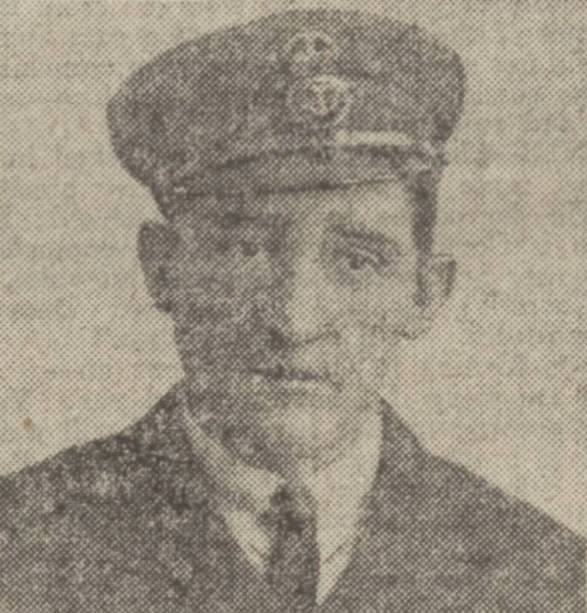Great War Dundee
This is Dundee's story of those that served in the First World War, and of the people left at home
We need you to tell us more about the life and times of Alexander Scrimgeour
Alexander Scrimgeour
Military Information
- Date of enlistment: 1908
- Place of enlistment:
- Service no: M/108
- Rank: Engine Room Artificer 3rd Class
- Service Occupation:
- Awards:
- Regiment/Service: H.M.S. Queen Mary
- Unit/Ship: Royal Navy
- Place of Death: Lost At Sea
- Age at Death: 23
- Date of Death: 31.05.1916
- Burial Country:
- Cemetery: Portsmouth Naval Memorial
- Grave/Mem Ref no: Panel 15
Personal Information
- Date of Birth: 27.11.1892
- Place of Birth: Luncarty, Perthshire
- Address: 15 Crescent St, Dundee
- Occupation:
- Mother:
- Father:
- Siblings:
- Spouse:
Ethel Bartlett (formerly Scrimgeour)
- Children:
More about Alexander Scrimgeour
Alexander Scrimgeour was the eldest son of Mr & Mrs Scrimgeour of Dundee. He was married to Mrs Ethel L Scrimgeour of Bellevue, Banff. He was a schoolboy when he joined the Royal Navy in 1908 as a Boy Apprentice and carried out his initial and trade training at HMS Fisgard, the Artificer Apprentice School in Plymouth, made up of old warships. His first ship was the Armoured Cruiser HMS Essex which he joined in 1912. His next ship was the old cruiser HMS Royal Arthur when he was advanced to Acting Engine Room Artificer Fourth Class. On 4 September 1913, he was drafted to the newly completed battlecruiser HMS Queen Mary and served in this ship until May 1916. The first Commanding Officer was Captain Reginald Hall who later achieved fame in charge of the Naval Intelligence organisation. Alexander was onboard when the ship visited Brest in February 1914 and Russia in June. After the outbreak of war in August 1914 the Queen Mary was part of the battle cruiser force and took part in the Battle of Heligoland Bight at the end of the month. Over the next 20 months the Queen Mary took part in patrols and sweeps of the North Sea seeking out the German Fleet and he was advanced to Engine Room Artificer Third Class in October 1915. The clash of the British and German Navies came at the end of May 1916 when both sides’ battlecruisers met in the North Sea off Denmark. Soon after the action started Queen Mary hit the Seydlitz twice starting fires. Later Queen Mary hit Seydlitz again but was hit in return by Seydlitz and Derfflinger. Within two minutes Queen Mary had exploded and sank in three parts, taking over 1200 men to their deaths. Only nineteen were saved but Alexander Scrimgeour was not one of them and his name is commemorated on the Portsmouth Naval Memorial on Southsea Common, Hampshire. His surname is spelt Scrimgeour in the Naval History Net website.
Alexander has no known grave but is remembered on the Portsmouth Naval Memorial. He was serving aboard H.M.S. Queen Mary which was the last Battle cruiser built before World War I and only member of her class. She was in the 1st Battle Cruiser Squadron and was commanded by Cecil Irby Prowse. She was hit twice by the German Battle Cruiser Derfflinger during the early part of the battle of Jutland and her magazines exploded shortly afterwards, sinking the ship. Of the crew of 1,289 there were only 20 survivors.
Alexander Scrimgeour M/108 Royal Navy
SCRIMGEOUR—On 31st May, Alexander Scrimgeour, engine-room artificer of H.M.S. Queen Mary, eldest son of Mr and Mrs Scrimgeour, caretaker, lately of Wallacetown Public School. – Inserted by his Uncle Alec and cousin Aggie Tina.
Dundee Peoples Journal 10th June 1916
Information supplied by Gary Thomson, additional information kindly supplied by Michael Caldwell.
Further information supplied by Iain Stewart and Iain Birnie
Can you tell us more about Alexander Scrimgeour'? Some additional facts, a small story handed down through the family or perhaps a picture or an heirloom you can share online. Contact our curator...

